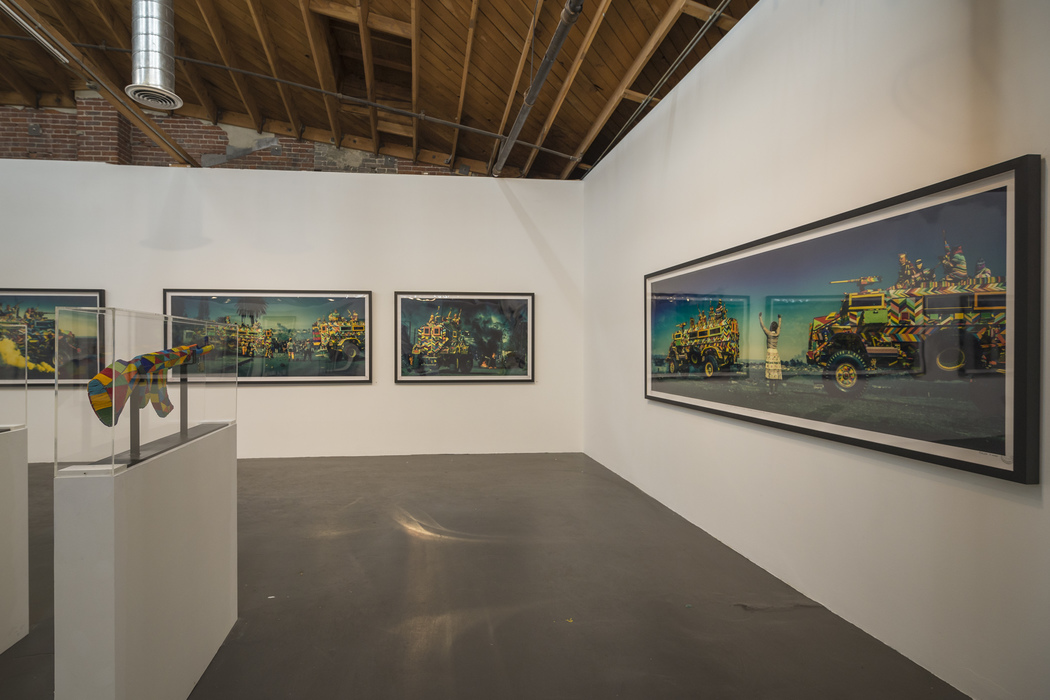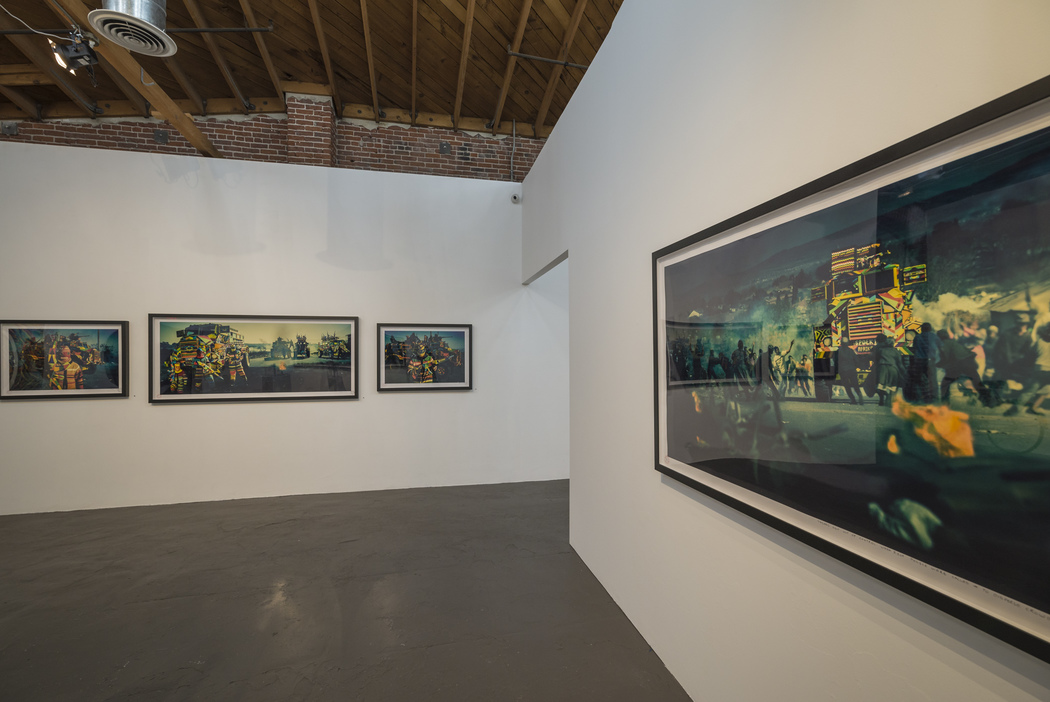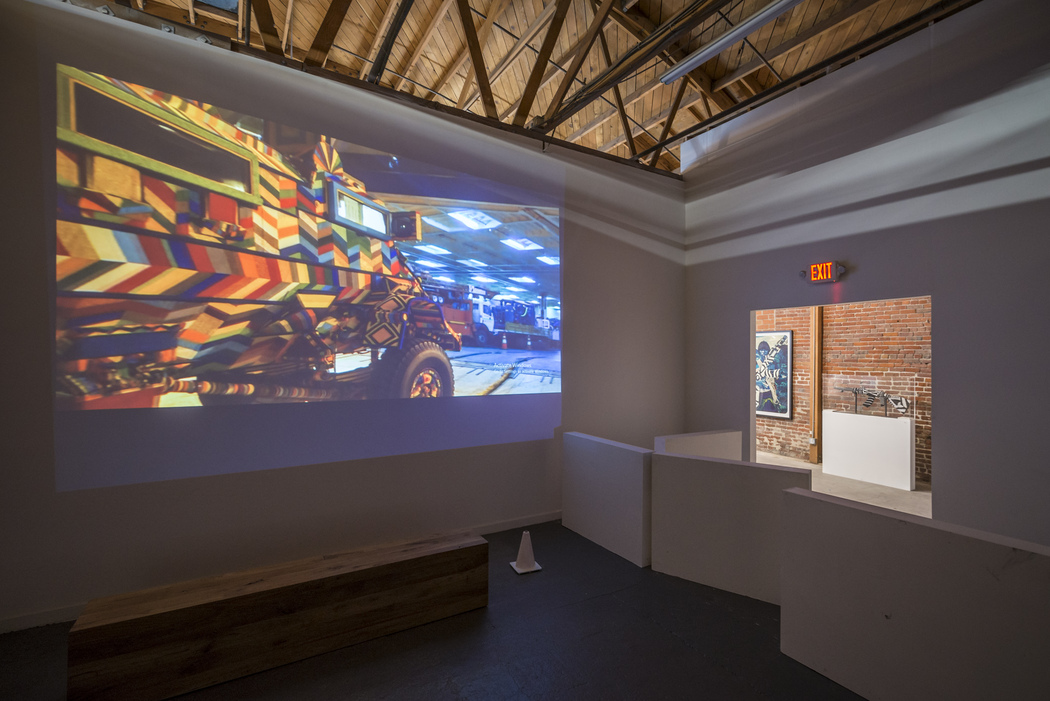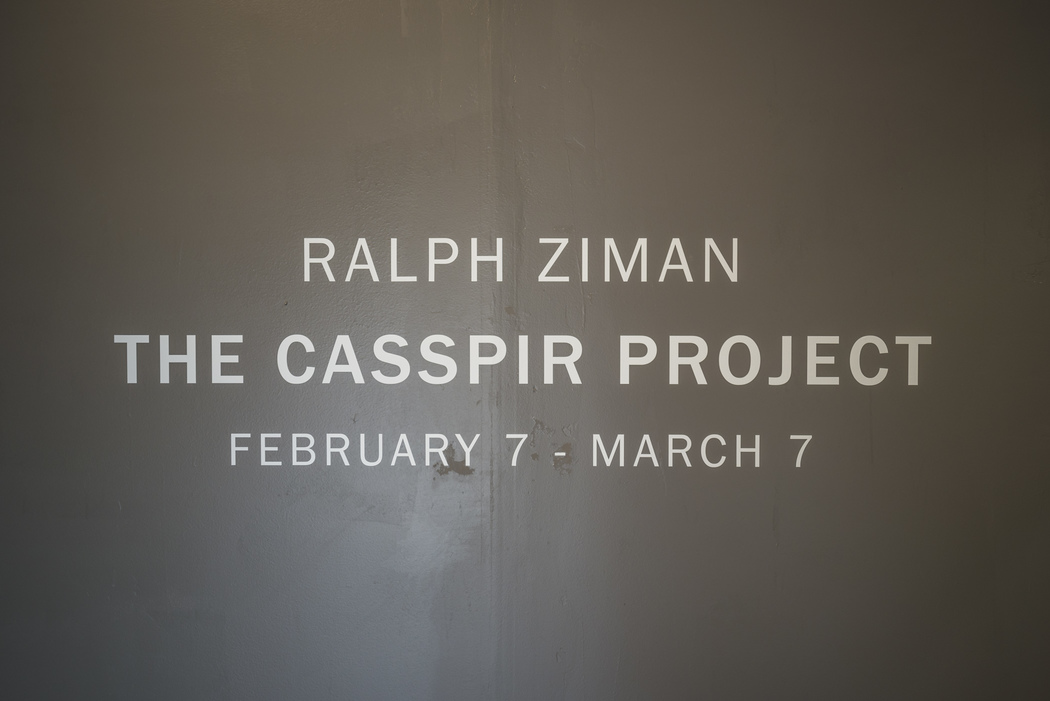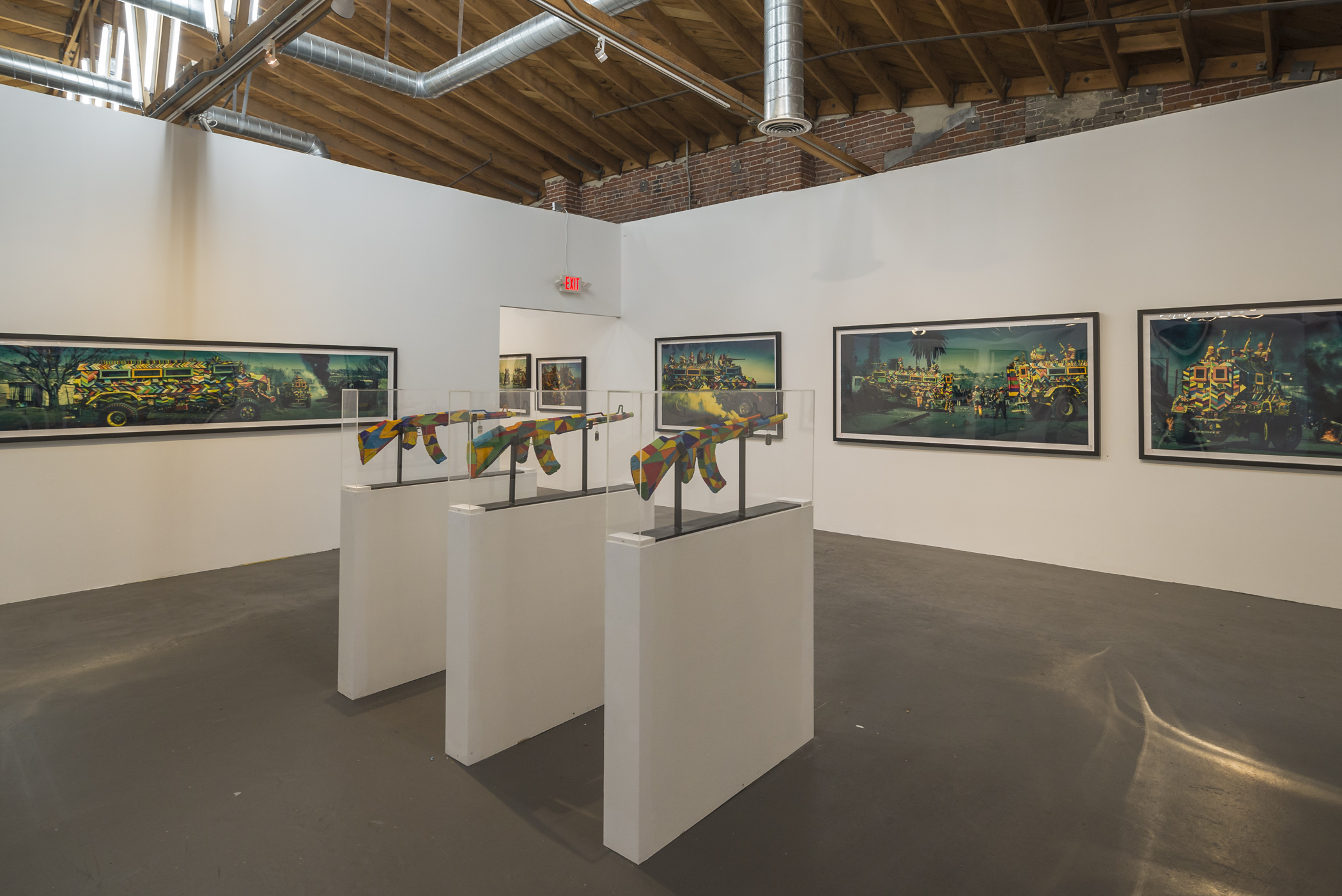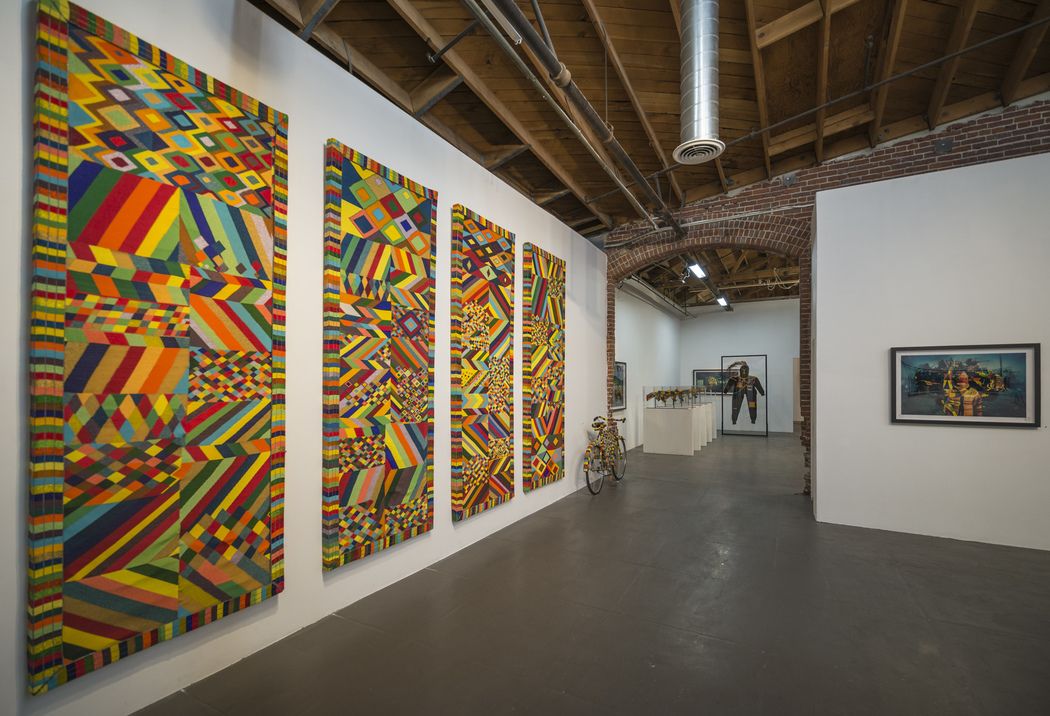THE CASSPIR PROJECT
February 7 – March 7, 2019
The Casspir Project is a unique multidisciplinary, experiential exhibition that encompasses a variety of media including installation, film, photography, oral history, and documentary. The exhibition will be open on February 7 and remain on view through March 7, 2019.
The centerpiece of the exhibit is a hulking Casspir military vehicle. Ziman has reclaimed the eleven-ton, twenty-two-foot-long and nine-foot-high four-wheeled monster into a striking, sparkling “Africanized” work of art, entitled SPOEK 1. Enveloping its every surface with millions of brightly-colored panels of glass beads, Ziman and his team transmuted the Casspir from armored vehicle to adorned sculpture, effectively indigenizing the reviled symbol of tyranny. The dazzlingly intricate beadwork and traditional patterns, courtesy of local artisans from Zimbabwe and the Mpumalanga province in South Africa, are full of energy and enthusiasm–the spirited reds, yellows and greens representative of a vibrant optimism which had come into view after a dark past of systemic discrimination and segregation.

Developed in South Africa in the 1970s, the Casspir was originally conceived as a military vehicle. A weapon of terror during the apartheid era, the armored Casspir was extensively used against civilian populations. Widely despised and feared, it soon became synonymous with violence, police intimidation, and institutional oppression. “I wanted to take what was the ultimate symbol of apartheid,” artist Ralph Ziman says, “and turn it into something that is African and beautiful.”
As modern America’s law enforcement agencies become increasingly militarized, Ziman’s repurposed work could not be more timely. Purchased by oppressive governments everywhere and by the U.S. as it commenced wars in Iraq and Afghanistan, Casspirs have since been handed down to local police forces. The same imposing behemoths deployed against South African blacks in the 80s are now utilized to suppress Black Lives Matter protests in Ferguson, New York, and Baltimore. Symptomatic of America’s dark presence of violence and police brutality, the Casspir’s disquieting presence is an echo of South Africa’s brutal past. In addition to the focus on the Casspir, the exhibition will also highlight the proliferation of the arms trade. In order to purchase the Casspir, Ziman, for an incredulous amount of 250 dollars, officially became a licensed international arms dealer. He is now permitted to buy and sell firearms, artillery projectors, and ammunition around the world.
For this iteration of The Casspir Project, Ziman has designed the massive gallery space with a “macro and micro” experience in mind. Each room within the gallery space brings context to the next, informing the project as a whole. The exhibition starts with an installation of brightly colored AK-47s leading into a room with large photographs taken in Soweto. For the photos, Ziman recreated scenes from newspapers during the apartheid, incorporating many of the elements found within the exhibition such as the beaded guns and SPOEK 1. A screening room shows a 20-minute documentary by Ziman that tells the history of the Casspir, from its design and conception to people’s personal experiences with it in the ‘70s and ‘80s. It chronicles Ziman’s reclaiming of the Casspir, detailing how he transformed and Africanized it. The exhibition culminates with the dramatic presentation of SPOEK 1, lit only by a spotlight in a dark room.
Opening a dialogue between those who remember and those too young to know, The Casspir Project is a profound attempt to reconcile history. Ziman has reclaimed the savagely violent brute—embellished and bedazzled, the Casspir has been made less threatening, its power and authority subverted.
10% of sales of artworks (excluding the Casspir) will be donated to the Brady Center To Prevent Gun Violence, whose mission is to create a safer America by ending America’s gun violence epidemic, and The Ron Finley Project which aims to transform Inter-cities around the World, from food deserts to food forests through urban gardening.
ABOUT RALPH ZIMAN
Ralph Ziman was born in 1963 in Johannesburg, South Africa, and currently lives and works in Los Angeles, California. He has had solo exhibitions at Joseph Gross Gallery in Tuscon, AZ, and C.A.V.E. Gallery in Venice, CA, as well as group exhibitions at the National Gallery in Cape Town, South Africa, Museum of Contemporary African Diasporan Arts in Brooklyn NY, and the FNP Art Fair in Johannesburg, South Africa. His work has been written about in Art in America, BCC, and The Guardian.
EVENTS
Live Painting
Saturday, February 9 – Sunday, February 10th
12 PM – 6 PM
Ralph Ziman x Kelcey Fisher aka KFish
Saturday, February 16 – Sunday, February 17
12 PM – 6 PM
Ralph Ziman x Bisco Smith
Saturday, February 23 – Sunday, February 24
12 PM – 6 PM
Ralph Ziman x Moncho 1929
Saturday, March 2 – Sunday, March 3
12 PM – 6 PM
Ralph Ziman x TBA
Saturday, February 23 – Sunday, February 24
12 PM – 6 PM
Ralph Ziman x Moncho 1929
Panel Discussion: From Oppression to Expression: Speaking Out Against a History of Violence
Saturday, February 23
6 PM – 9 PM
Moderator: Alberto Retana, President & CEO of Community Coalition. Panelists: Ralph Ziman, South African Artist, and filmmaker; Suzanne Verge, President, Los Angeles Chapter Brady Campaign to Prevent Gun Violence; Ron Finley, aka “The Gangsta Gardener, and Founder of The Ron Finley Project; and Mark-Anthony Clayton-Johnson, Founder of Frontline Wellness Network.
Programming Contact:
Cindy Schwarzstein, The Rendon // 213.537-0687
cindy@therendon.com
Drink Sponsors:
Blackened Whiskey, Califia Farms, Flying Embers Kombucha, House Beer, Infuse Spirits, and Topo Chico

